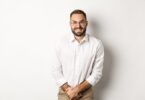Testosterone plays a vital role in a man’s body. It supports muscle building, strength, and energy levels. However, when testosterone levels drop, it can significantly affect a man’s health and fitness. Understanding how low testosterone affects a man is essential for maintaining an active lifestyle and addressing any challenges it may bring
Low testosterone can have many impacts. Men with low testosterone might find it harder to build muscles, feel strong, or keep up their endurance during workouts. Understanding how low testosterone affects the body can help us find ways to stay fit and healthy.
In this article, we’ll explore what testosterone is, why it matters for fitness, and how having low levels can affect strength, endurance, and muscle mass. We’ll also look at what causes low testosterone, the symptoms to watch for, and how to treat and prevent it.
What Is Testosterone and Why Is It Important for Men?
Testosterone is a hormone made mainly in the testicles for men and in smaller amounts in the ovaries for women. It’s important for many functions in the body, especially for men. It helps with muscle growth, bone density, and the production of red blood cells. Testosterone also affects mood and energy levels.
For athletes and people who like to stay fit, testosterone is very important. It helps build and repair muscles after workouts, making it easier to gain strength and endurance. When testosterone levels are high, it’s easier to see improvements in muscle mass and overall fitness.
Causes of Low Testosterone in Men
Several factors can lead to low testosterone levels. Here are some common causes:
- Aging: As men get older, their testosterone levels naturally decrease.
- Medical Conditions: Diseases like diabetes and obesity can lower testosterone.
- Lifestyle Choices: Poor diet, lack of exercise, and high stress can negatively impact hormone levels.
- Environmental Factors: Exposure to certain chemicals and pollutants can disrupt hormone production.
Understanding these causes can help you take steps to maintain healthy testosterone levels.
Symptoms of Low Testosterone
Low testosterone can cause several noticeable symptoms, including:
- Fatigue: Feeling very tired all the time.
- Reduced Muscle Mass: Difficulty building or maintaining muscles.
- Decreased Strength: Weaker performance during workouts.
- Low Endurance: Getting tired quickly and not being able to keep up with exercise routines.
Recognizing these symptoms early can help in seeking the right treatment.
How Low Testosterone Affects Muscle Mass
Low testosterone can significantly affect muscle mass. This hormone helps in protein synthesis, which is important for muscle repair and growth. When testosterone levels are low:
- Protein Synthesis Slows Down: Muscles don’t recover as quickly after workouts.
- Muscle Loss: It becomes harder to maintain existing muscle mass, leading to muscle loss over time.
- Increased Fat: With less muscle, the body tends to store more fat.
Maintaining healthy testosterone levels is crucial for keeping muscles strong and growing.
Impact of Low Testosterone on Strength
Strength training relies heavily on testosterone. With low levels, the body struggles to build muscle and increase strength. Here’s how it affects strength:
- Decreased Muscle Power: Muscles don’t perform as well, leading to weaker lifts.
- Slower Muscle Growth: Gains in strength are harder to achieve and take longer.
- Weaker Performance: Overall, workout performance declines, making it hard to progress.
Endurance and Low Testosterone Connection
Endurance is the ability to sustain physical activity over time. Low testosterone can reduce endurance in several ways:
- Reduced Stamina: Feeling tired more quickly during exercises.
- Increased Fatigue: Muscles tire out faster, making it hard to keep up with long workouts.
- Lower Aerobic Capacity: The body’s ability to use oxygen efficiently decreases, affecting endurance sports like running and cycling.
Diagnosis and Treatment Options
If you suspect you have low testosterone, it’s essential to get a proper diagnosis. Doctors can check hormone levels through blood tests. Once diagnosed, there are several treatment options:
- TRT Testosterone Replacement Therapy: This treatment involves taking synthetic testosterone to bring levels back to normal.
- Lifestyle Changes: Improving diet, exercising regularly, and reducing stress can help boost testosterone naturally.
- Natural Supplements: Some supplements claim to help increase testosterone levels, but it’s important to consult a doctor before using them.
Preventive Measures
Taking steps to prevent low testosterone is important for maintaining good health and fitness. Here are some tips:
- Healthy Diet: Eating a balanced diet rich in vitamins and minerals supports hormone production.
- Regular Exercise: Staying active helps keep testosterone levels stable.
- Stress Management: Reducing stress through relaxation techniques like yoga or meditation can prevent hormone imbalances.
- Avoiding Toxins: Limiting exposure to harmful chemicals and pollutants can protect hormone health.
Conclusion
Understanding how low testosterone affects a man is crucial for addressing its impact on fitness and overall well-being. From muscle loss to reduced endurance, the effects can be challenging but manageable. By identifying symptoms, seeking appropriate treatment, and adopting preventive measures, men can maintain their strength, energy, and vitality.
Have you experienced symptoms of low testosterone or know someone who has? Share your experiences or questions in the comments below. Let’s build a supportive community to tackle this challenge together!







